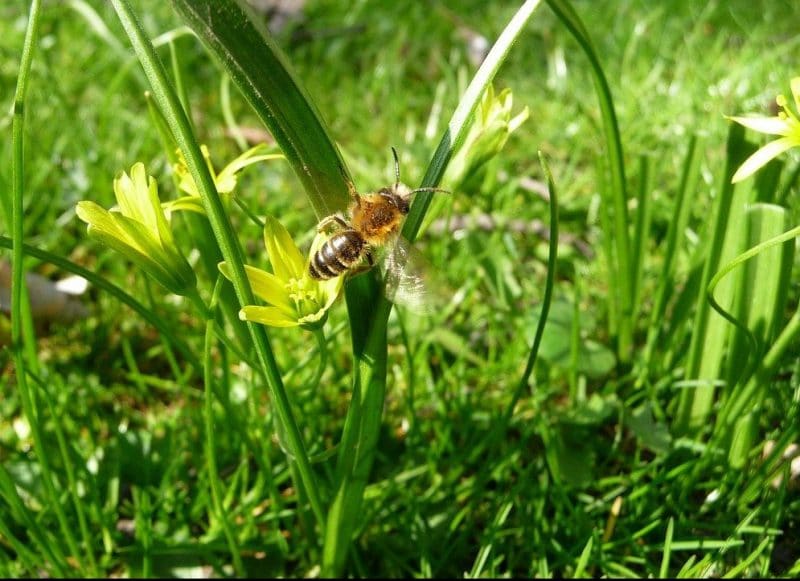Gardener or not, curiosity will have you wondering, “how is grass pollinated?” and a quick answer to this is via the wind. Grasses belong to the family of Poaceae with an extensive list of 10,000 species. They depend on wind pollination to reproduce, and you must understand some underlying questions with this process if you want to grow them.
While some consider grasses a problem in the greenhouse and garden, we humans benefit from their other members. They include edible food sources such as rice and wheat, ornamental grasses for landscaping, and those that we use as materials for furniture and houses. Learning how grasses pollinate will help you grow them efficiently and take advantage of their benefits.

How Is Grass Pollinated: Is There Only One Way?
Grasses undergo wind pollination. The simplest explanation for this is because these crops can’t use seeds efficiently compared to other species. Grasses can produce many flowers, but there’s a low chance of these flowers becoming seed sources.
With this in mind, it’s not surprising that gardeners face problems with inadequate pollination and productivity. And while some cross-pollinate their grasses, it would be more sensible to understand wind pollination to prevent losses when growing these plants.
Wind pollination of grasses
Grasses undergo wind pollination as you would expect with species that have green flowers without sepals or petals. Another telltale sign that the species depend on wind pollination is if its flowers lack scent and color that otherwise attract insect pollinators. The parts are also more adapted for catching wind and pollen instead.
This is because survival depends on how much pollen the plant can produce and if it has structures that can aid in carrying the pollen at a great distance. You may notice how grass flowers have large anthers and feathery stigmas to make up for more effortless reproduction. Remember that the anthers produce the pollen, while the stigmas capture the pollen.
When do grasses pollinate?
Grass pollination mostly starts in May, but this varies depending on the species. For example, some grasses will only produce pollen from summer to fall, but some plants pollinate in spring. It’s also notable that pollination can occur earlier in the year if the spring is warm, but will happen later if the spring is cool.
Instead of relying on a specific season, it will be easier to understand a typical grass pollination pattern. For example, it can take 4 to 10 days for pollination to spread on a cluster of flowers. The releasing of pollen starts with the proximal flowers and then ends with the distal ones.
Therefore, if you’re wondering how long pollination can occur in a grass field, it can take 21 days or more. More so, dry weather can shorten this period, and cool weather will lengthen the pollination. Remember that high temperatures affect grass pollen viability, so it’s at its peak in the morning and gets low in the afternoon.
What affects grass pollination?
As previously discussed, the temperature affects grass pollination, as it extends or shortens the period and dictates how early or how long until pollination starts. This can mean a change in the number of days or weeks from the pollination last year or when the pollen will be highly viable. However, you can assume that stress from humidity, drought, and nitrogen supply will also influence pollination.
The greenhouse can be a useful tool in the pollination of grasses since studies have shown the use of glazed paper bags and its positive effects in the pollination of grasses. You can also protect the crops from low humidity, drought, and rainfall, reducing seed yield and pollination using the greenhouse.
How do grasses reproduce?
Before you get confused, grasses can still undergo sexual reproduction via seeds, and gardeners can cross-pollinate them as well. You can also reproduce grasses using stolons, rhizomes, nodes, and buds in vegetative propagation. But if you want to focus on self-pollination and cross=pollination, there are some considerations.
Not all grasses are self-compatible, but some have cleistogamous grass florets like cereal grains that will easily undergo self-pollination. On the other hand, cross-pollination is possible for monoecious and dioecious grasses, but not for dichogamous species. Lastly, the plant should have a chasmogamy system if you want to have species that allow both self-pollination and cross-pollination.
Conclusion
Learning about the reproduction of plants is key to having an efficient garden. But if you have grasses, you might wonder how is grass pollinated in the absence of insects. You’ll notice that the flowers in grasses are not colorful and scented to attract insect pollinators, but instead, they have defined structures.
If you put these observations altogether, you can assume that grasses utilize wind pollination. They produce a high number of pollen that should survive long distances to guarantee production. However, it’s still worth noting that some studies and gardeners use seeds and cross-pollination for grasses.
The only advantage with learning wind pollination is it’s easy and somewhat reliable, with less room for errors in the gardener’s side. More so, you can use a greenhouse to protect the grasses from factors that affect pollination. After all, the period length and when pollination starts to depend on conditions such as temperature, humidity, and rainfall.
